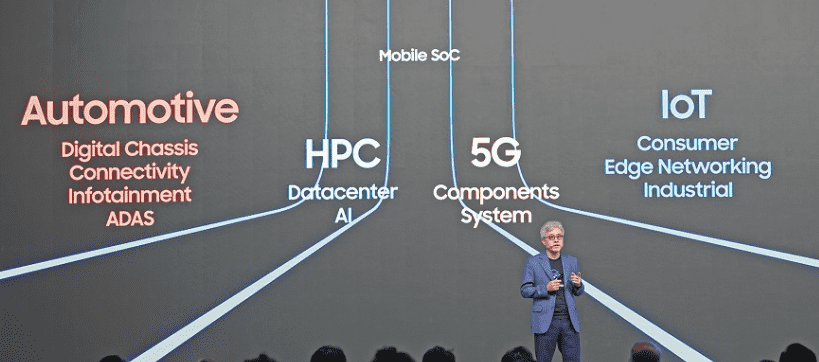Recently, Samsung announced its future technology roadmap at the “Samsung Foundry Forum 2022”. Samsung said that it will start mass production of the 2nm process in 2025, and the more advanced 1.4nm process is expected to be mass-produced in 2027. At the same time, it will also accelerate the development of 2.5D/3D heterogeneous integrated packaging technology for the foundry. The service provides a total system solution and is expected to provide a 3D packaging solution called X-Cube in 2024.
Samsung said that by 2027, the proportion of HPC, automotive, and 5G chips will exceed 50%, and it plans to target the high-performance and low-power semiconductor market and more than triple the production capacity of advanced process nodes. Samsung will enhance its GAA-based 3nm process for chips used in HPC and mobile devices; Samsung currently provides 28nm eNVM solutions for automotive-grade chips, and plans to advance to 14nm eNVM solutions in 2024, with 8nm eNVM solutions in the future; In terms of RF chips, following the 14nm process, there will be an 8nm process, and a 5nm process is also under development.
In the DRAM space, Samsung announced that its latest fifth-generation 10nm-class (1b) chips will begin mass shipments by 2023, and conduct exploratory research into sub-10nm DRAM manufacturing, which requires new designs and materials. Samsung is ahead of most of its competitors in this regard, and currently generally manufactures DRAM chips on the 14nm process node. In addition, GDDR7 under development by Samsung will be a booster for future GPUs, with a speed of 36 Gbps, which is double the existing GDDR6 of 18 Gbps.
Samsung is also developing the ninth and tenth-generation V-NAND technology. It plans to release the eighth-generation 230-layer V-NAND chip by the end of this year. The storage density of the 512Gb chip will increase by 42%, which is expected to be achieved by 2030. 1000-layer V-NAND chip. Samsung is also working on QLC research, hoping to further improve performance while increasing storage bit density.

Related Posts
What is a juice-jacking attack? How can we be safe from such attacks?
Getting the right dashcam for your needs. All that you need to know
WhatsApp iPad App Gets Major Overhaul, Adds New Communities Feature
Moto G85 5G launched in India but is unlikely to beat VIVO or XIAOMI
Rise of deepfake technology. How is it impacting society?
Smartphone Apps Get Smarter- Meta AI’s Integration Across Popular Platforms